
New Providence History
A History
No less than a half million Scotch-Irish people came to the United States between 1700 and 1775 seeking that religious liberty denied them in the Old World, landing in Pennsylvania where policies were very liberal. Around 1732 these people began moving southward across the Potomac into the Valley of Virginia, being encouraged to settle far up the valley west of the Blue Ridge Mountains because of the opening of the Beverley Manor and Borden’s Grant, which came to be our Rockbridge and Augusta counties. Here the hills reminded them of the highlands of Scotland, and two little mountains brought back memories of similar ones in Ireland.
In September 1740 the Reverend John Craig accepted a call for the congregation of Shenandoah and began a ministry to a congregation which covered the valley from the Blue Ridge to North Mountain. A second Presbyterian community developed on the watershed of the James and Shenandoah rivers.
Some of the settlers were the Stuarts, Steeles, Houstons, Wilsons—sturdy Scotch-Irish whose lives were thoroughly permeated by Presbyterianism. With the construction of their homes being completed, they turned their attention to the building of a place for the worship of God. To it was given the name “South Mountain Meeting House.” This meeting house was supplied by John Craig once in two months.
So New Providence grew up in a wilderness land with people living under quite adverse conditions. But the story of the church is one that inspires pride in its members and officers, its denomination as a whole, and especially in its dedicated ministers down through the years since 1746.
In 1746 the Rev. John Blair visited the community around South Mountain Meeting House and organized New Providence. The first meeting house was located at or near the spot where Old Providence A.R.P. Church now stands. It was a log structure similar to those of its time. By 1748 this was a flourishing Christian society and New Providence, Timber Ridge, and Falling Spring joined in calling Mr. Elisha Byram. He refused the call and supply ministers were secured by New Providence and Timber Ridge until settled ones could be called.
Mr. John Brown, a ministerial candidate in New Castle Presbytery, was sent to supply and was called in August of 1753. This call was signed by 115 attendants of the two congregations. So he was ordained as the first minister of New Providence and Timber Ridge on October 11, 1753, at a meeting of New Castle Presbytery.
Around the late 1740s a number of the members of New Providence began desiring to move the church to the Walkers, Hays, and Moffatts creeks area because this would be a more central point when considering the large territory from which the congregation grew. And so the second log church was built on a “hillside across the creek from where the present church stands.”
The deed to the first property possessed by the church was given by Joseph and Elizabeth Kennedy, who conveyed three acres and 118 rods of ground to the trustees of New Providence meeting house for a good will consideration. The deed was dated
August 21, 1754, and says that the building is already underway. This was our third building and a stone one at that. It probably occupied the site over which our present brick building stands and was completed around 1760.
Building this stone church was quite an undertaking for the people of that day. There were no roads, no wagons. Sand for the mortar was brought from South River some eight or ten miles away by the young girls and women of the congregation on horseback.
Unintentionally a sycamore seed was brought in the sand which took root and grew into a lovely tree that still stands today. Under its branches have walked heroes of Revolutionary times, through its branches have been heard the joyful notes of the organ as lovers have taken their solemn vows, as well as the strains of the last sad requiem for a loved one as one generation has followed another through more than 250 years of history.
In 1771 a second tract of land, about eight and a half acres, was deeded to the church by Mr. and Mrs. James Wardlaw.
John Brown was pastor for 42 years, resigning in 1795 because of ill health.
The church was soon to be served by Samuel Brown, whose wife was Mary Moore, well known to many as the “Captive of Abb’s Valley.” Mary Moore and her husband, Samuel Brown, are buried just a few feet west of the church sanctuary under one of the most interesting and imposing monuments of our cemetery.
Our cemetery is a very large, well-kept one, with many old graves, both marked and unmarked. We have a complete card file for easy location of graves.
So the history of our church continues with the Synod of Virginia being organized at New Providence on October 22, 1788. It was thus very fitting that the centennial meeting of the Synod was also held at New Providence on October 22, 1888.
In 1812 the stone building had been torn down to make room for a larger brick building, the fourth sanctuary for this congregation.
In 1819 the Rev. James Morrison was called to New Providence. His arrival marked the first keeping of written Session minutes and church statistics. On November 24, 1819, the Female Benevolent Society was organized because of a strong conviction of duty on the part of the women of the congregation. This is the earliest known Virginia Missionary Society.
The first Sabbath School was organized in 1823 under the superintendency of James Moore Brown, son of Samuel Brown. It was held in the gallery which extended across one end of the first brick church and included blacks and whites who were taught the scriptures and catechism. The year 1875 is the first mention of a young men’s Bible Class. Some other early Superintendents were Mr. Thomas H. Walker, Capt. H. B. Jones, Mr. Thomas Smiley, and Mr. Walter E. Beard.
In 1837 the earliest land survey map of the church’s property was made and is still existent. It showed a total of 11½ acres. In 1866, 1872, 1892, and 1905 other additions of land were made to the property of the church totaling an additional 17¾ acres.
The church grew from 128 communicants in 1819 to more than 569 in 1833. By 1855 the need for an even larger facility led the congregation to agree to build a fifth sanctuary, our present structure, which was completed in 1857. The need for a manse became obvious after the resignation of Dr. Morrison, and construction was soon begun, with the manse being completed in 1858. This manse was sold at public auction in 1979 to Mr. and Mrs. Donald Beard.
In 1976 a new manse was given to the church as a memorial honoring an elder, Mr. George McClure, by James F. McClure, his brother.
In 1886 a building program under the leadership of Dr. C. R. Vaughan was started for the erection of the first Sabbath School building. This was accomplished chiefly through the efforts of the Ladies’ Aid Society. Upon its first occupancy, the “Infant Class” was organized by Mrs. Sallie J. Withrow. This Sabbath School building was also used as a classical day school.
Rev. G. A. Wilson was called to the pastorate here in 1891 and filled the pulpit very acceptably for 17 years. He was the best gardener in the community and a great lover of flowers. It was during his pastorate in 1895 that the Ladies’ Aid Society put on the first chrysanthemum show.
He was followed by Dr. Henry W. McLaughlin, a descendant by marriage of Samuel and Mary Moore Brown. How long he had cherished the idea of a modern Sunday School plant is not known, but it was first recorded at a formal meeting of church officers on Sunday, September 30, 1918. In November 1922 the Finance Committee and the Building Committee were authorized to proceed with the building.
Through two large subscriptions secured by Dr. McLaughlin and $5,000 from the ladies, the canvass for funds went over the top. Thus a new concept was born into the congregation of the place of the church in the rural community.
Church membership almost doubled in 16 years. Through “outpost Sunday Schools” the long existing barrier between two communities in one was broken down. The Session’s slogan “No child within the bounds of New Providence shall be beyond walking distance of a Sunday School” was brought to realization when New Providence had five outposts at one time.
The church took the lead and its spirit went into almost every community activity. This spirit meant starting projects in the community like a movement to “call” a doctor and then starting a small clinic.
Since the days of Dr. McLaughlin, other ministers—Morton Hanna, Barclay Walthall, Locke White, R. G. Hutcheson, Don Campbell, John K. Boyd, David Coblentz, Thomas T. Biggs, John H. H. Lewis, Gary Coppedge, Christopher L. Crotwell, and Keith Cornfield have continued the work begun here more than 275 years ago. Most recently, New Providence called its first female to serve as fulltime pastor; Rev. Loren Tate Mitchell began her ministry at New Providence in 2020. In 2021, New Providence celebrated 275 years of service to the community.
New Providence Church, 1746-1996, A History by Katharine L. Brown is available for purchase at New Providence Church.
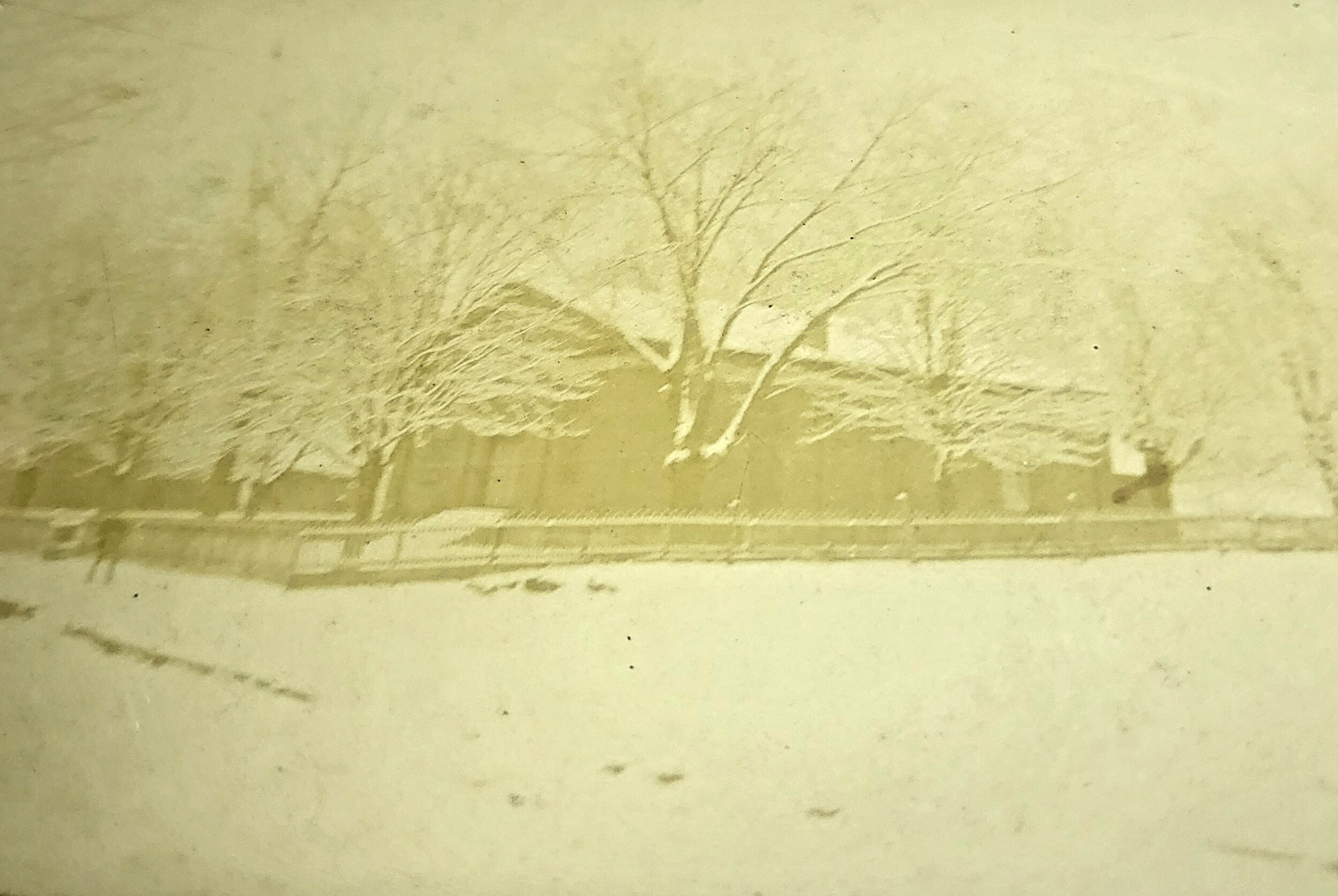
Likely the church structure in 1812
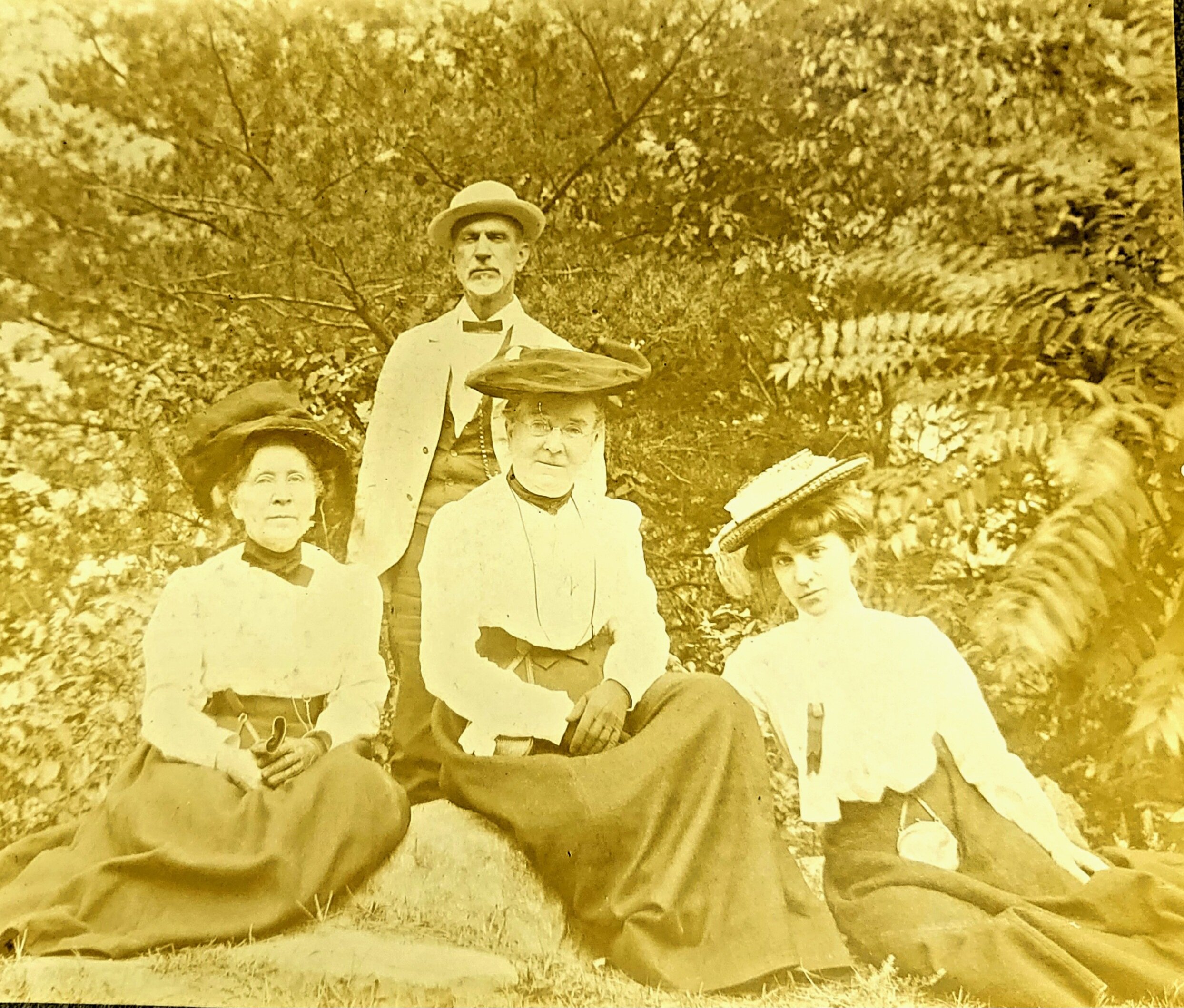
Capt. J. H. B Jones, Principle of NP Academy with wife, daughter, and sister.

Construction of current sanctuary in 1850s

Baseball Team in 1900

Showing buses and wagons used to transport children for Vacation Bible School in 1930s.
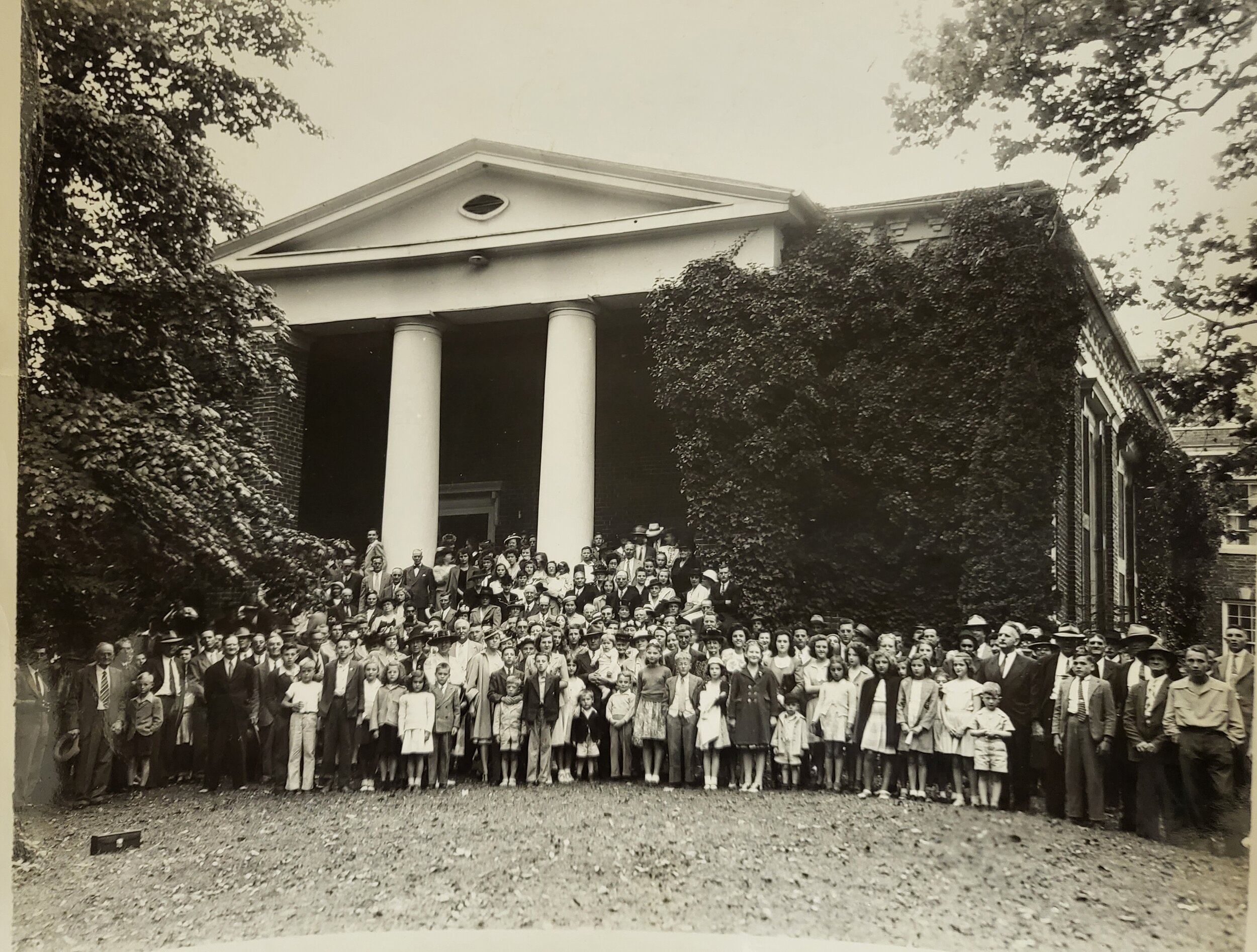
Bicentennial Celebration 1946

Descendants of Mary Moore in 1946
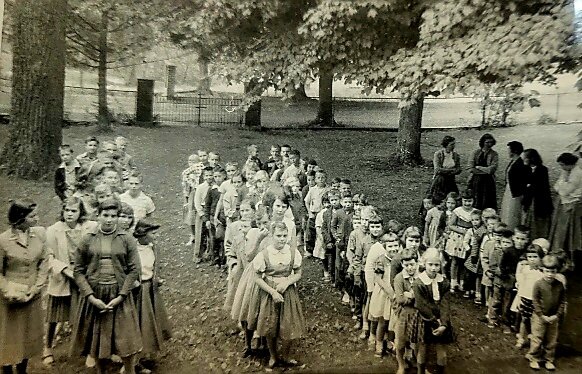
Sunday School 1956
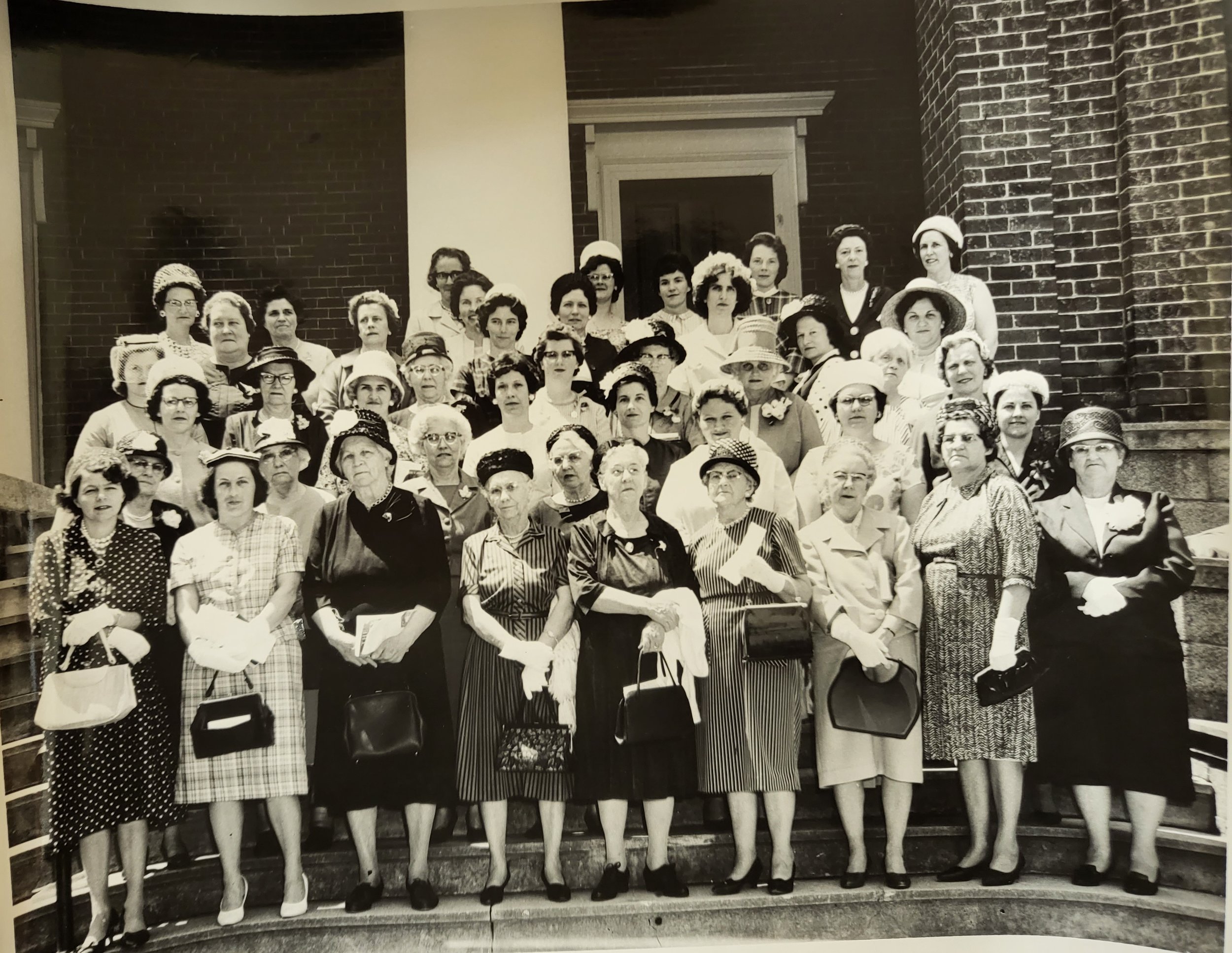
Women of the Church 1965

